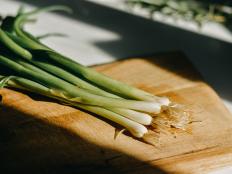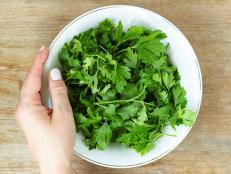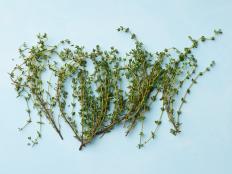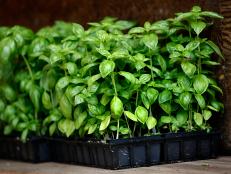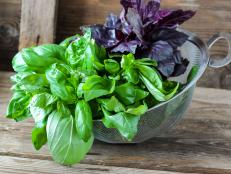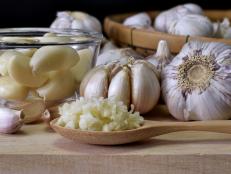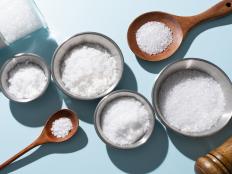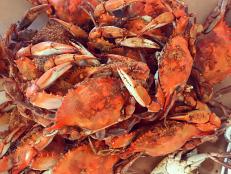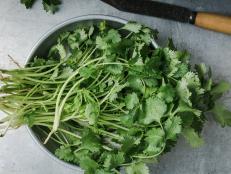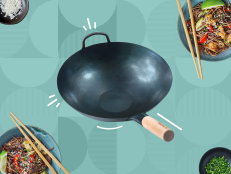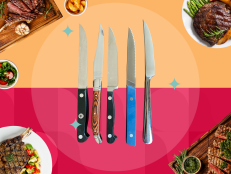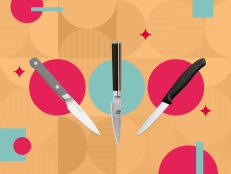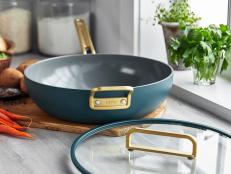What Are Chives?
Plus: are chives the same things as scallions? What about green onions?

Mint Images/Getty Images
By Fraya Berg for Food Network Kitchen
Fraya is a chef and a contributing writer at Food Network.
Chives, which appear to be tall, dark strands of grass, aren’t grass at all. Delicate but with a bit of raw onion punch, chives bring that added sharpness to any dish they garnish. Here's everything you need to know what chives are and how to buy, cook with and store them.

Abraham Zed/Getty Images
What Are Chives?
Chives are related to onions and garlic in that they are members of the allium family. But unlike onions and garlic, they don’t have an edible bulb. Instead, the entire long strand of chive is edible. Chives have a very mild oniony flavor which can be compared to that of leeks.
Common chives and Chinese chives are the two types of chives used in the kitchen. Common chives are a very delicate long, thin tubes that are often used as a garnish: they’re what you typically see sprinkled on Eggs Benedict. Chinese chives (also called garlic chives) are much longer, wider and flatter than common chives and are often used as a main ingredient.

ALEAIMAGE/Getty Images
Are Chives the Same As Green Onions? Are They the Same As Scallions?
Chives are neither green onions nor scallions. They're close relatives, but not exactly the same. Chives are smaller and don’t have a bulb at the bottom that you can eat. Chives have a milder oniony tang than either green onions or scallions.
What Is a Good Chive Substitute?
When you need a garnish, you can use the thinly sliced dark green tops of green onions or scallions.
As an ingredient in a dish, you can use both the tops and bottoms of green onions or scallions.
Shopping, Storing, Washing and Freezing Chives
How to Shop for Common Chives
Chives are typically packaged in a clear box, which prevents them from being crushed. Sometimes they're bundled up with a rubber band instead. Look for very fresh, firm stems, being sure to check the tips, where wilting starts.
How to Store Common Chives
Remove the chives from their packaging, roll them in a paper towel, place the roll in a zip-top bag and refrigerate for several days until the chives start to wilt or brown.
How to Clean Common Chives
Remove only what you will use from the bag, and gently rinse with cold water. Dry immediately by rolling in a dry paper towel and patting.
How to Freeze Common Chives
Chives can be frozen, and it’s a good idea to do so if you have leftovers: better to freeze than let them wilt. Simply chop them up, spread them out on a sheet of paper towel and freeze them in a single layer so they don't clump together. Once they're frozen, transfer them to a resealable plastic bag and store in the freezer for several months.
Frozen chives do not work as a garnish, but they are a great addition to soups and stews. Use them in recipes where you would be chopping and cooking them anyway, or where you can just toss the whole bunch in a pot and they’ll be strained out.

zhihao/Getty Images
How to Shop for Chinese Chives
Chinese chives are usually sold in large bunches fastened with rubber bands. Choose bunches that have a bit of yellow or pale green a the bottom, the closest part to the root. They will be floppy, due to their length and the fact that they are flat. They often appear to be dull, as opposed to the bright green of the common chives, and that’s ok. These chives are almost always cooked, and when they are, you will see their vibrant green come out.
How to Store Chinese Chives
Chinese chives are sturdier than the common variety and can be stored in a plastic bag in the vegetable drawer.
How to clean Chinese Chives
Rinse them under cold water and pat them dry. If they’re going to be chopped and put in dumpling filling, pretty dry is good enough. When you’ll be using them in a stir fry, get them as dry as you can; you don’t want a dangerous spatter of hot oil and water.
How to Freeze Chinese Chives
As with common chives, Chinese chives can be frozen, but there’s an extra step. It’s best to cut them first and then give them a quick dunk in boiling water to blanch them. When they're drained and cooled, give them a squeeze with your hands to remove as much water as possible, then freeze them as you would common chives.

EdwardSamuelCornwall/Getty Images
Can You Eat Chive Flowers?
In addition to being beautiful, chive flowers are edible and have a very mild flavor. They can be used as a garnish on their on or with finely sliced chives. Chefs typically pull them apart and scatter tiny petals as opposed to using a whole flower.
How to Grow Common Chives
Chives are an easy plant to grow in either a pot or a garden. Give them a spot that ranges from sunny to partially shady and they'll be happy. Best to plant chives in spring, from plants themselves - doing so is faster than planting from seed. Plant the chive plants 6 inches apart in a garden or one plant per 6-inch pot with drainage holes. Water potted chives every couple days. To enjoy them, snip the stems at the very bottom. They will grow back.
Chive Recipes

Renee Comet
If you double the recipe for the herb butter and freeze it, you’ll be able to put it on anything - like next week’s mashed potatoes.

You'll have leftover wonton or dumpling wrappers; freeze them for when you make tis recipe again (trust us, you'll be coming back for more).

Con Poulos
Make this cheese and chive corn bread once, and you’ll make it again and again. Have fun with it and swap out the add-ins.
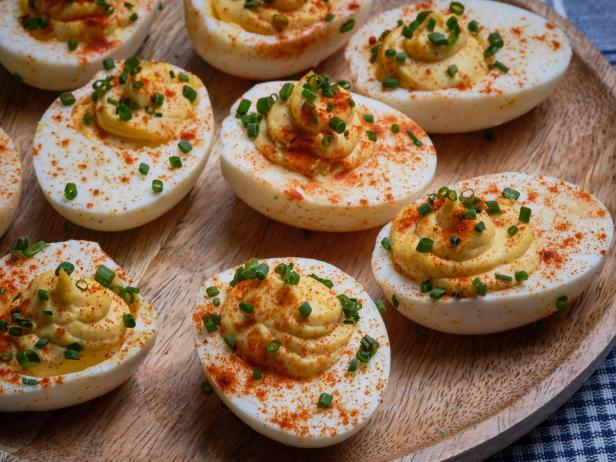
Caitlin Ochs
Some say deviled eggs are back in style. We say “No, they were never out of style.”

Armando Rafael
Bacon and butter! Now we’ve got your attention. Chives add just the right amount of sharp balance.
Related Links:






















